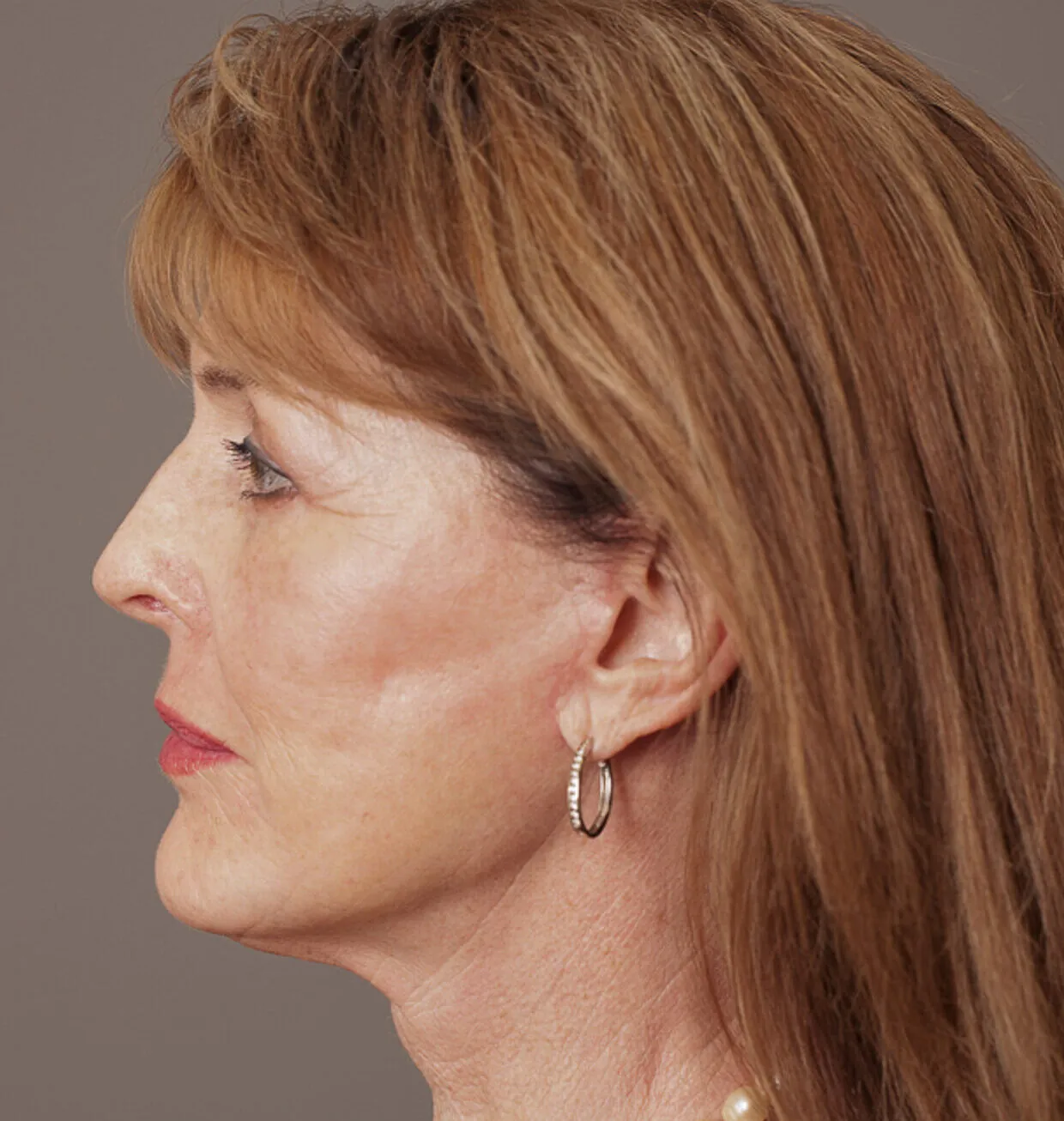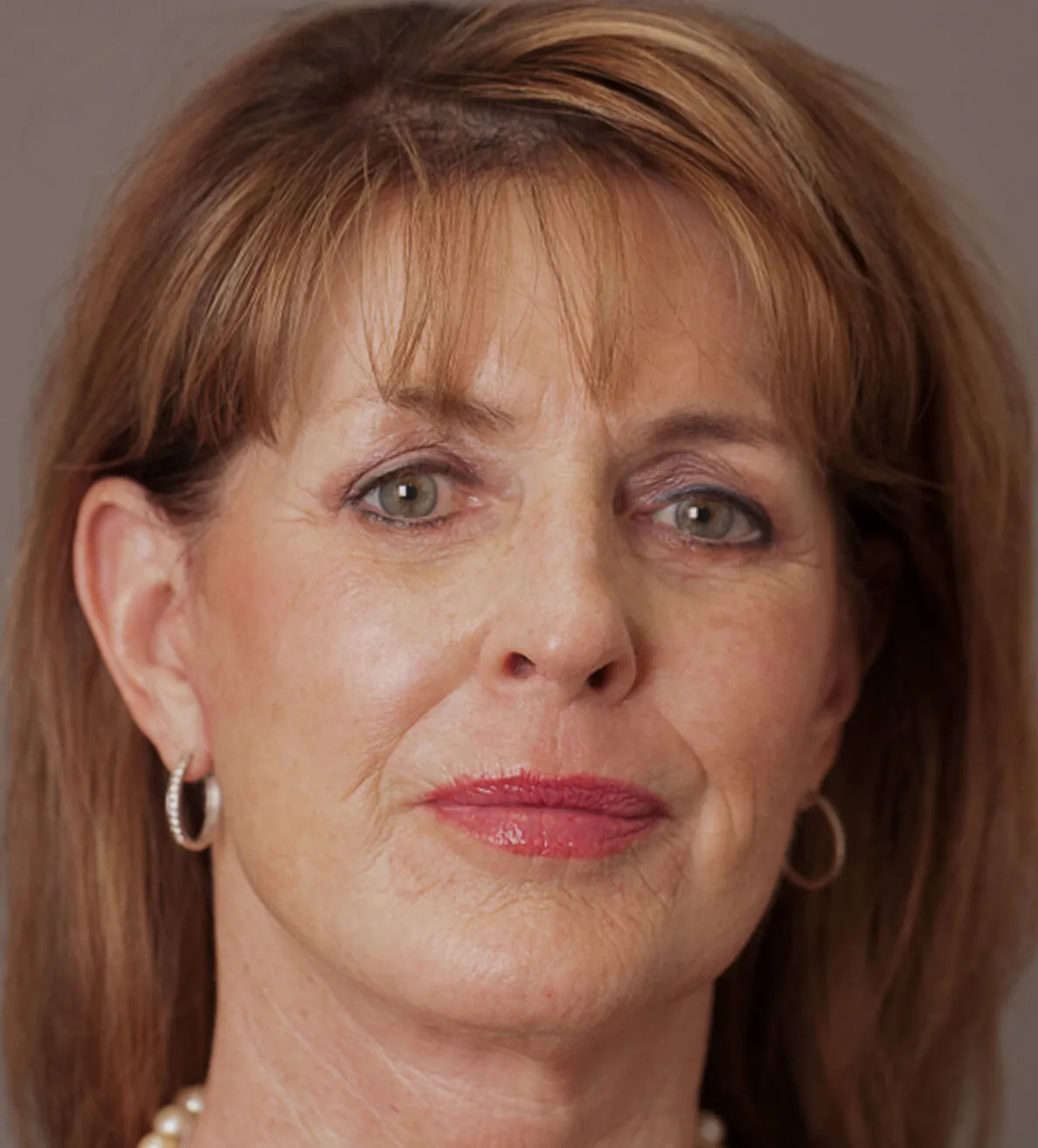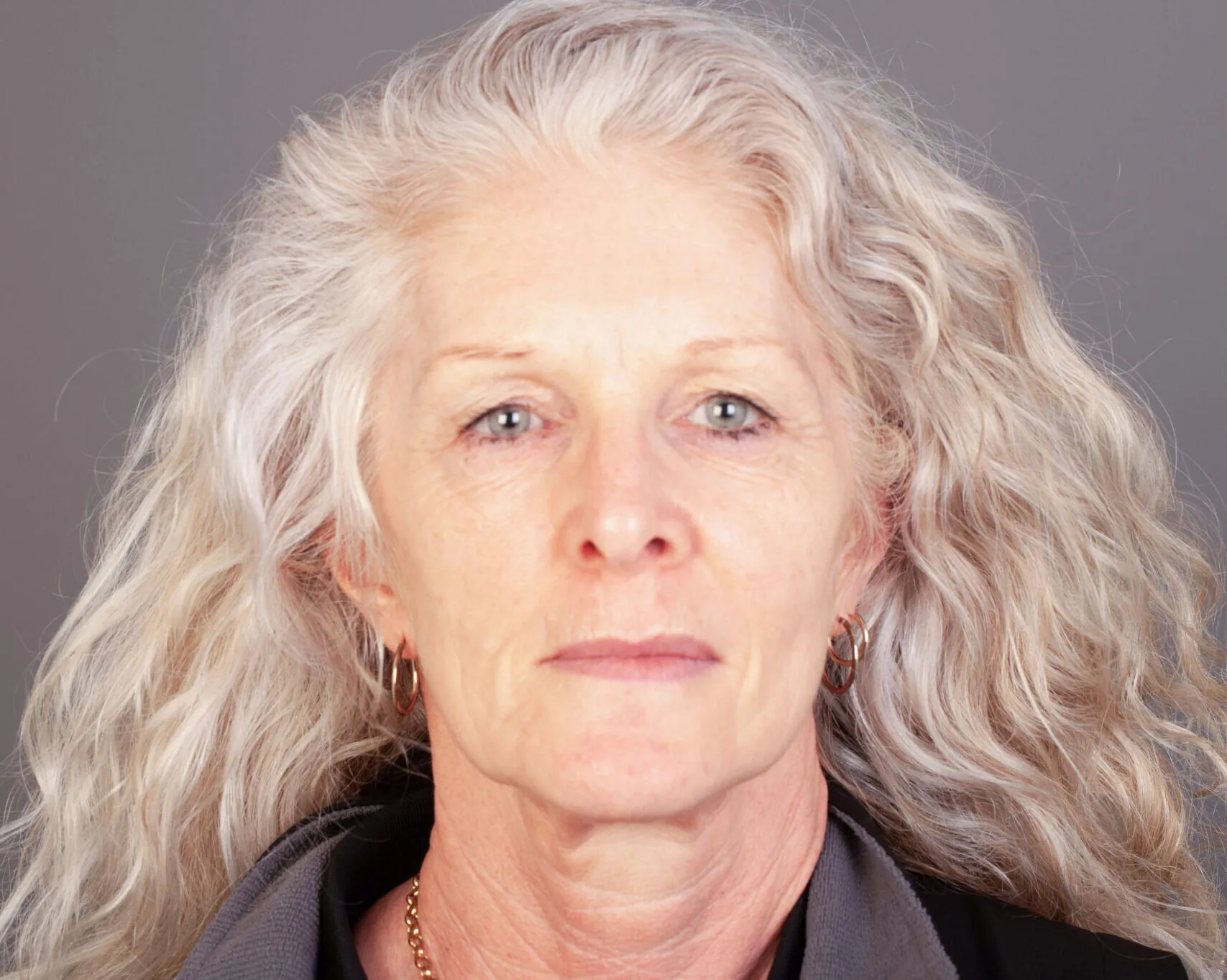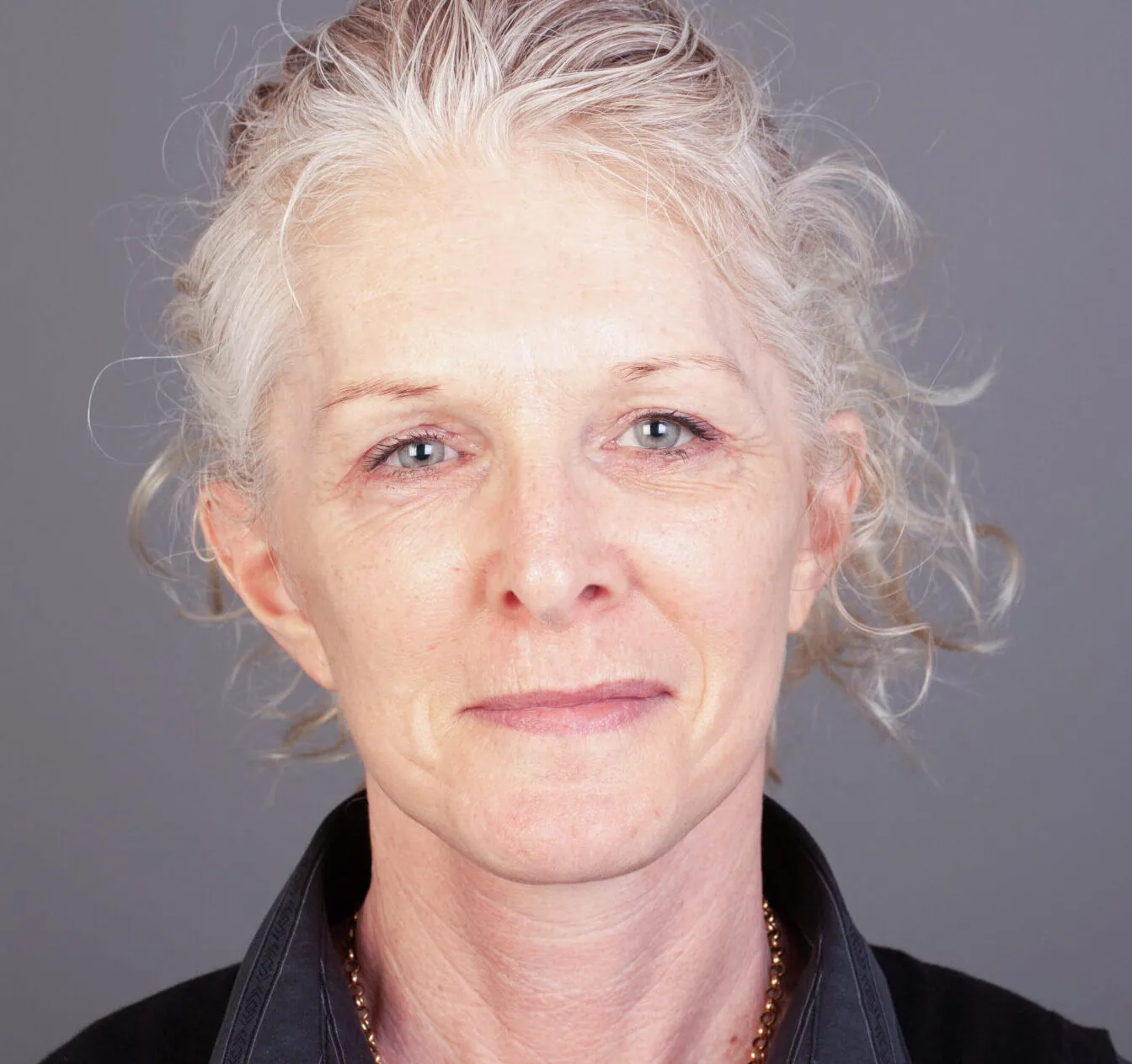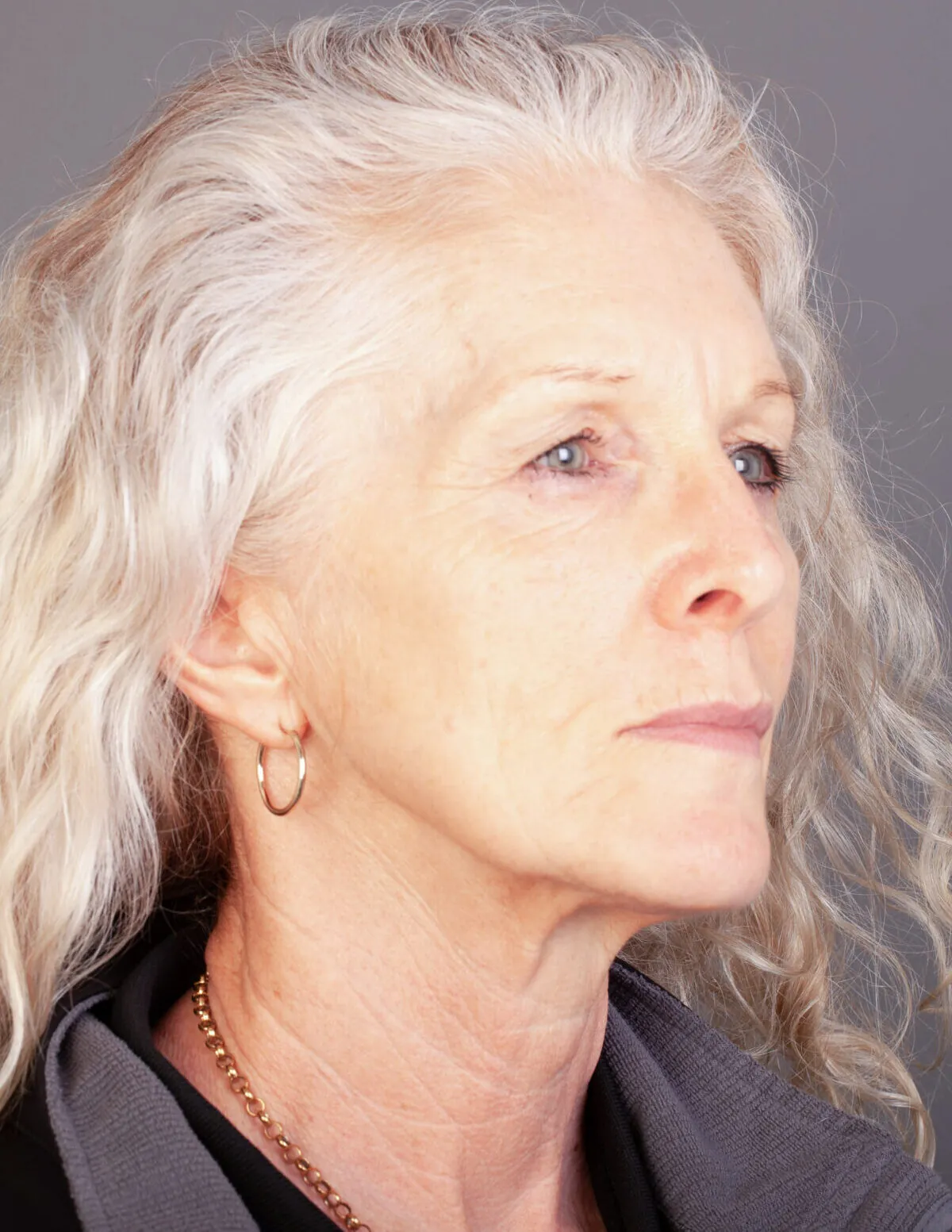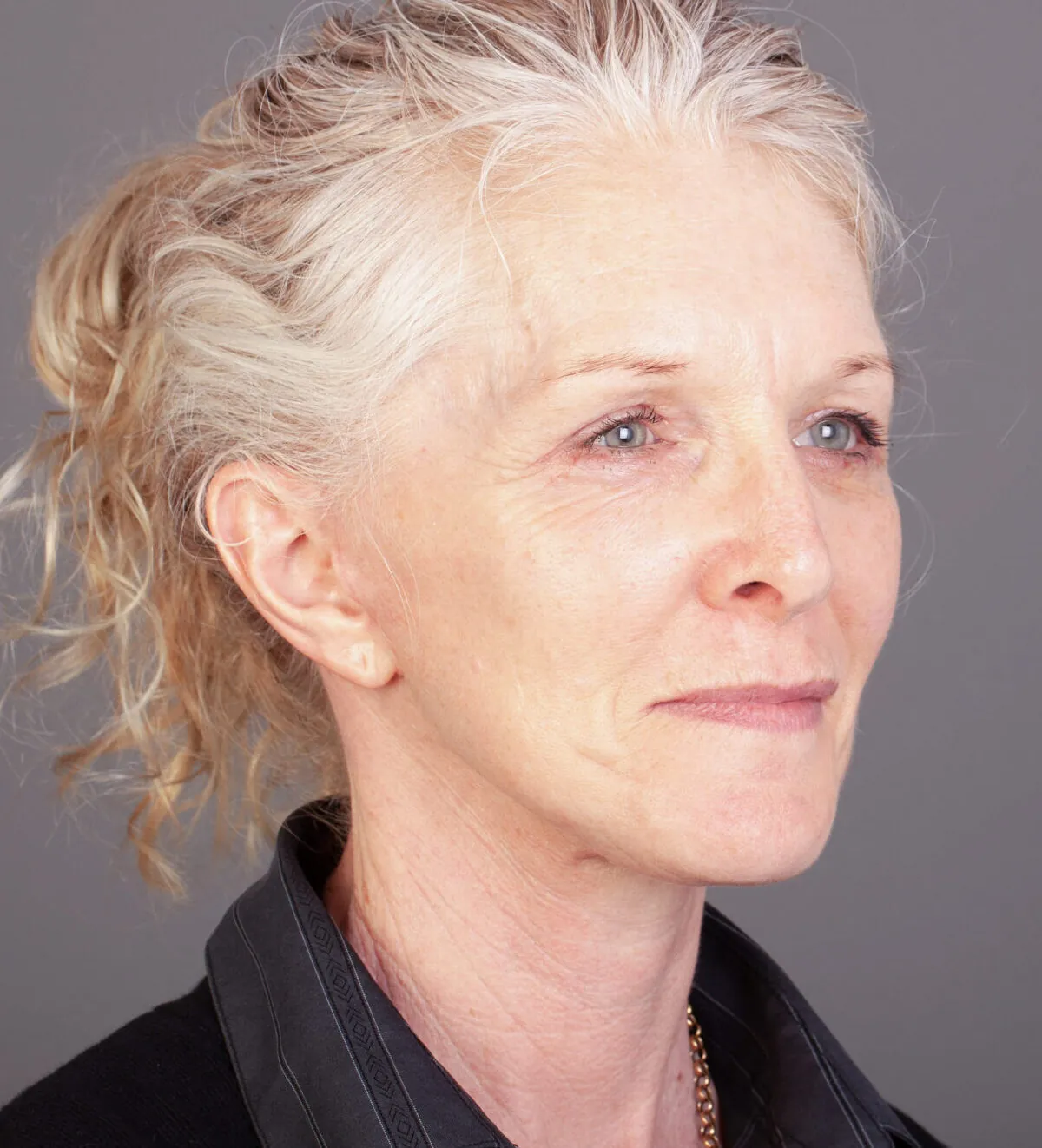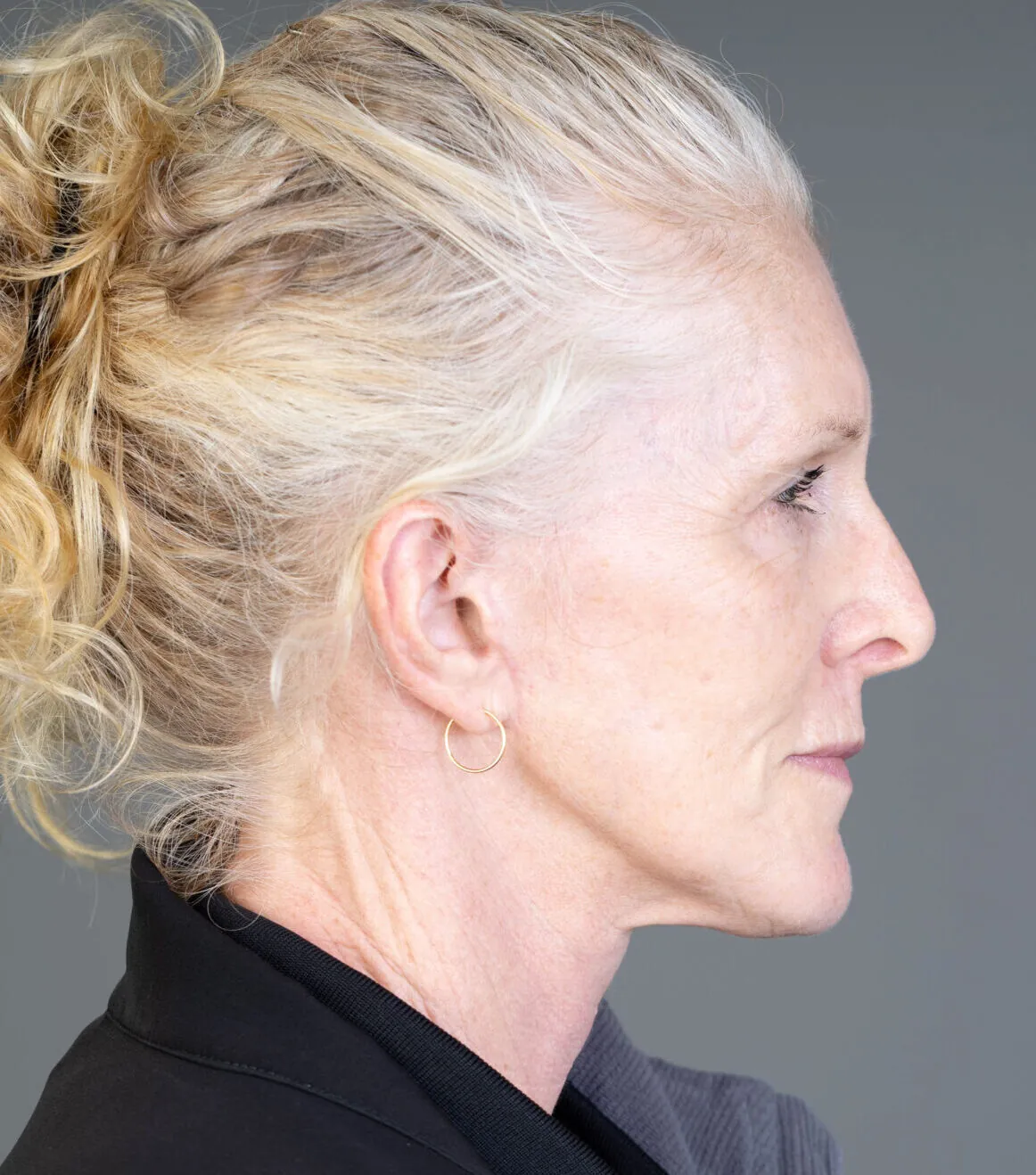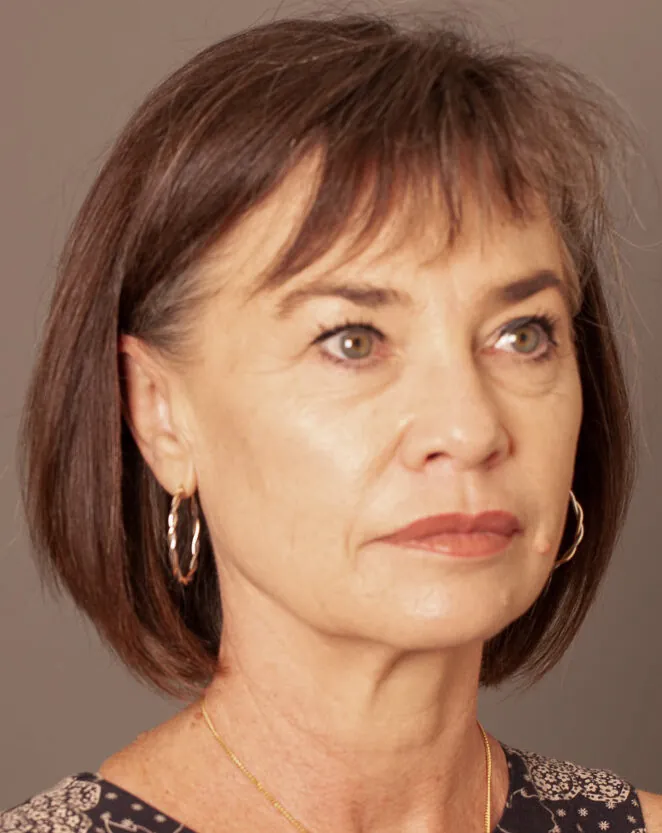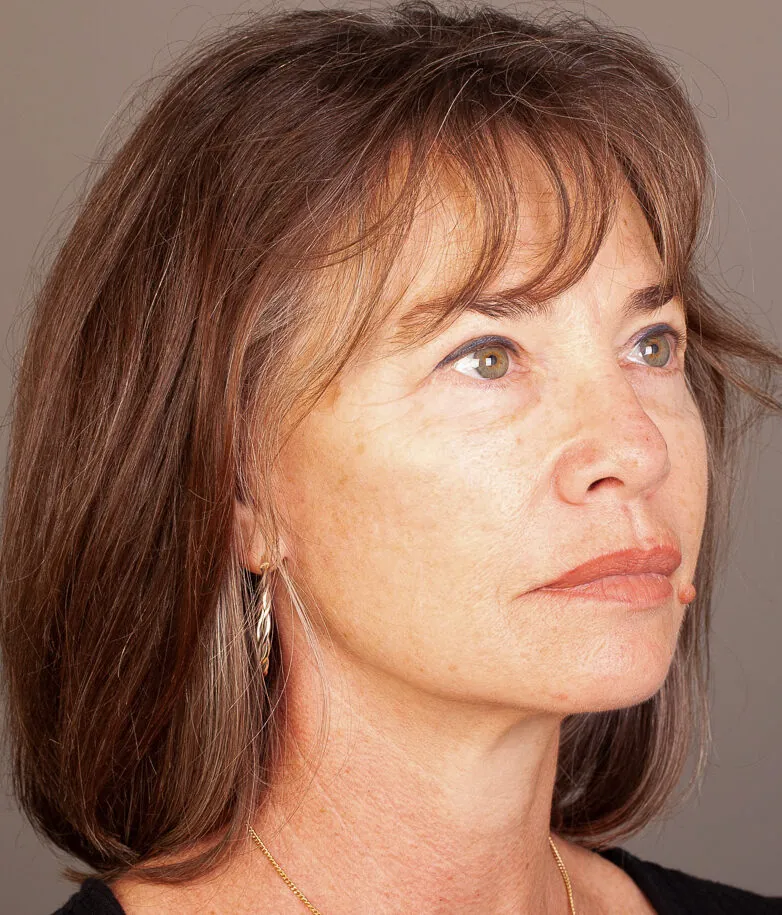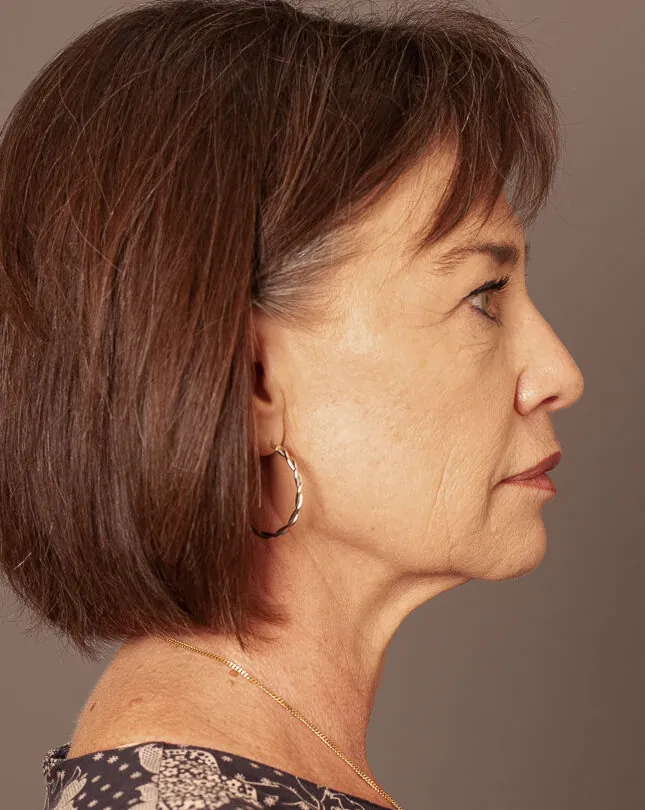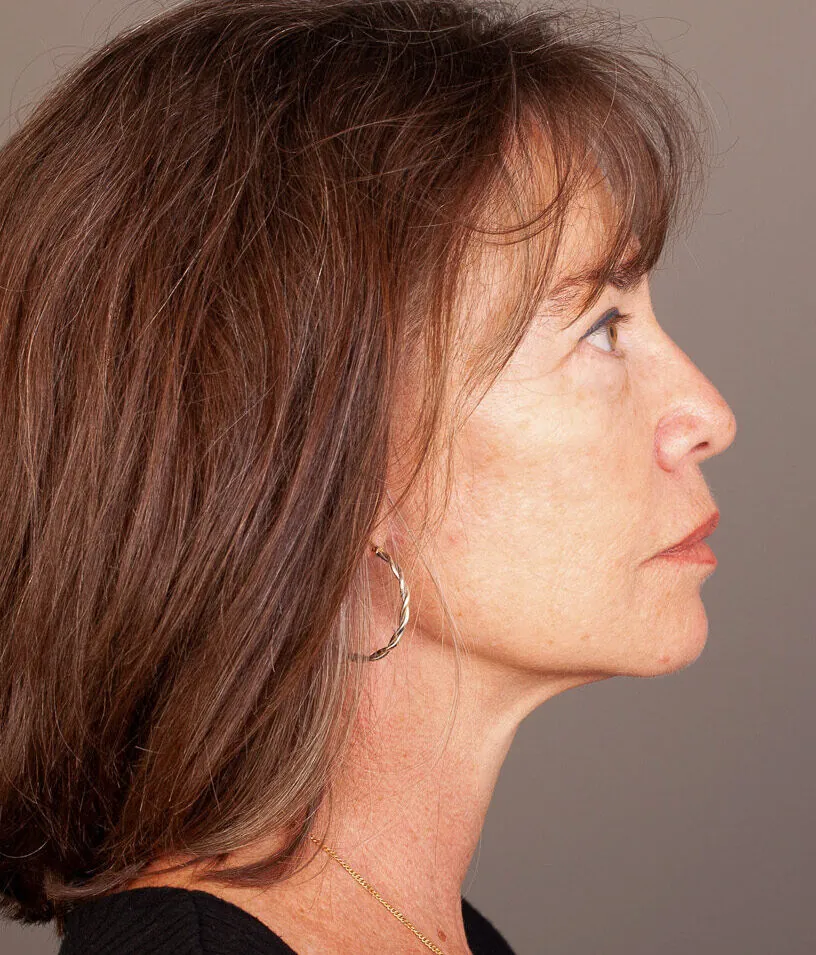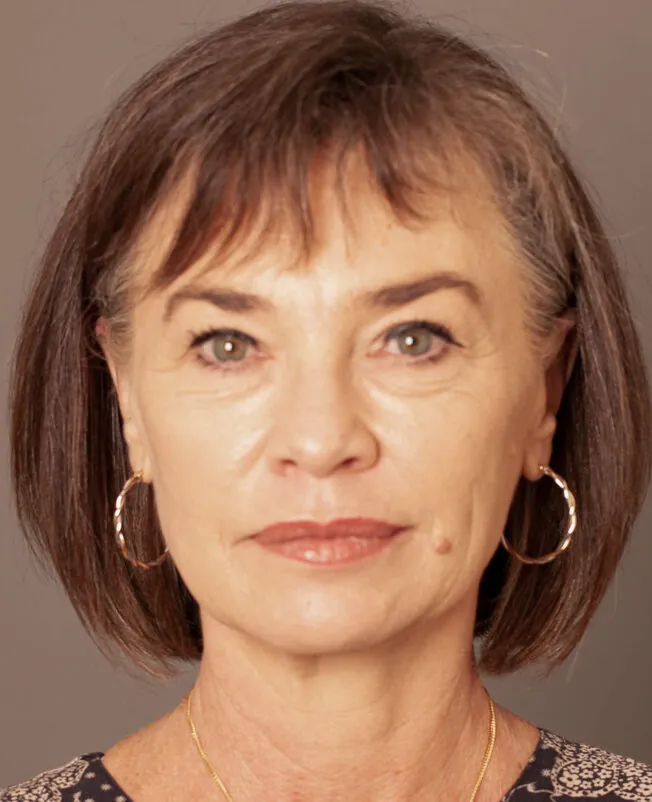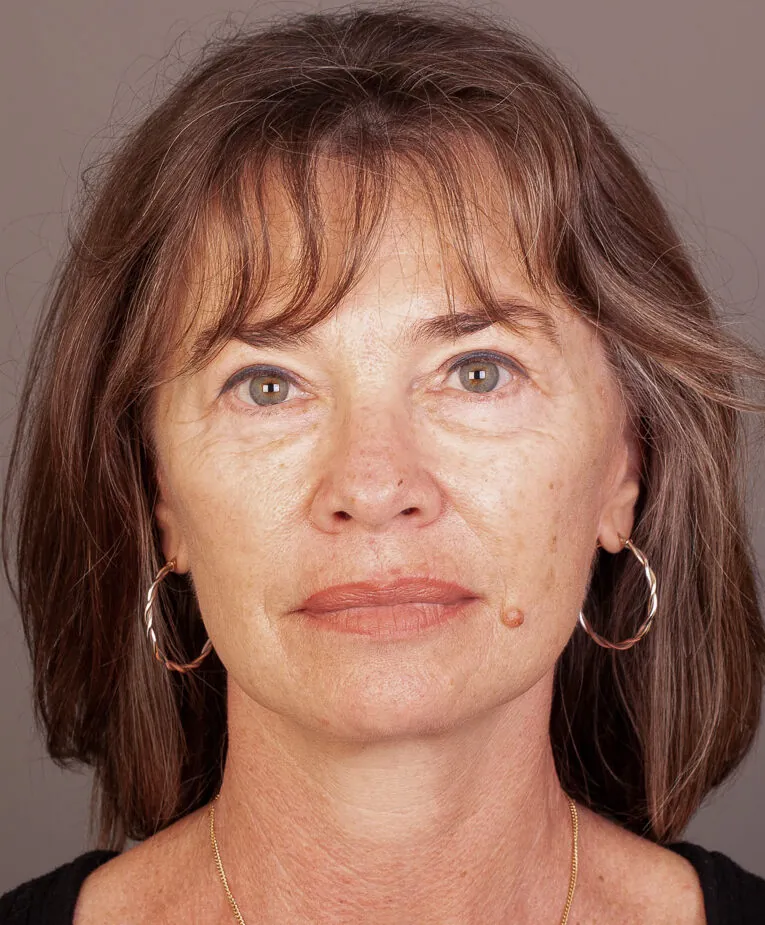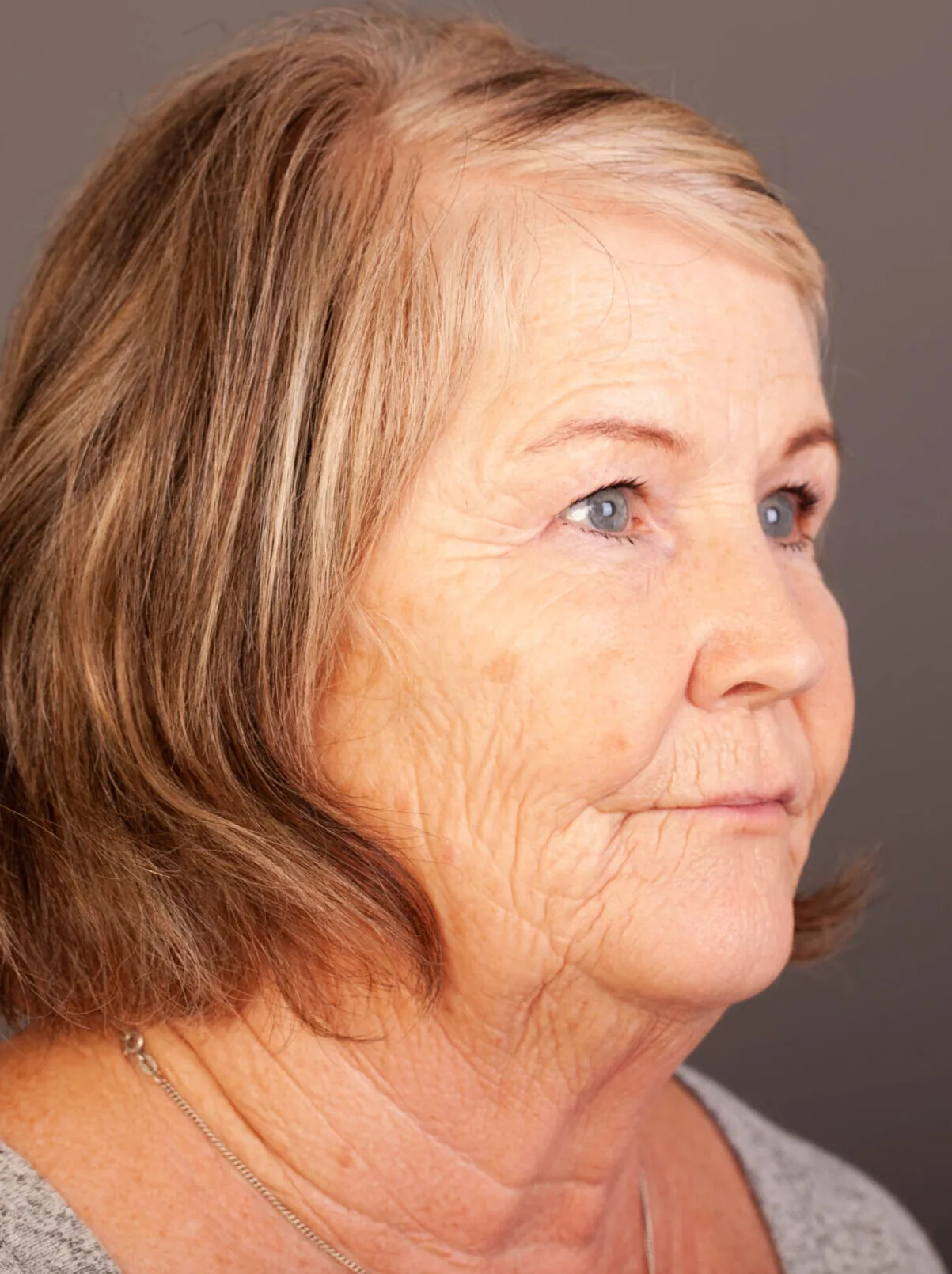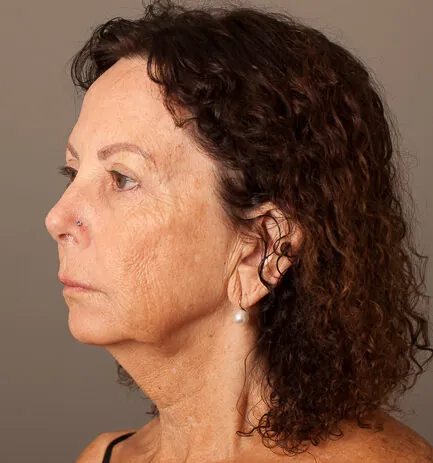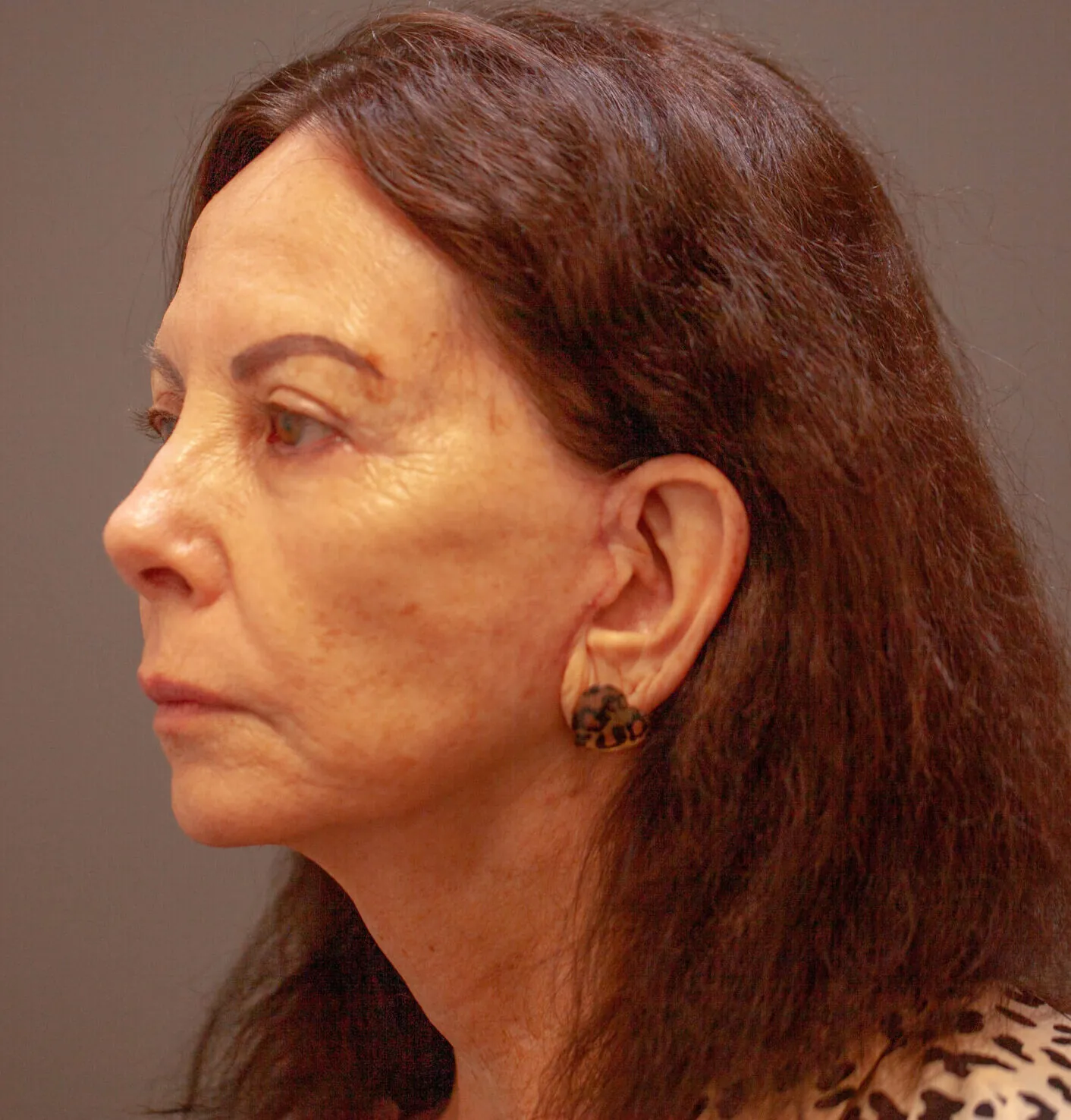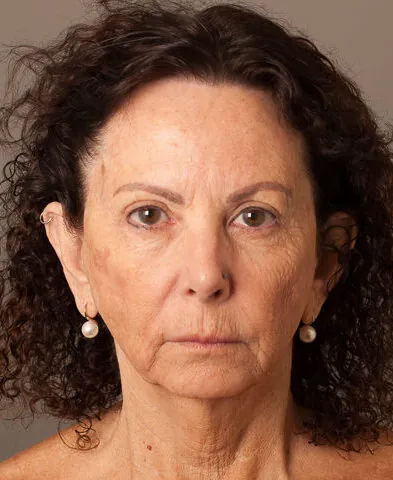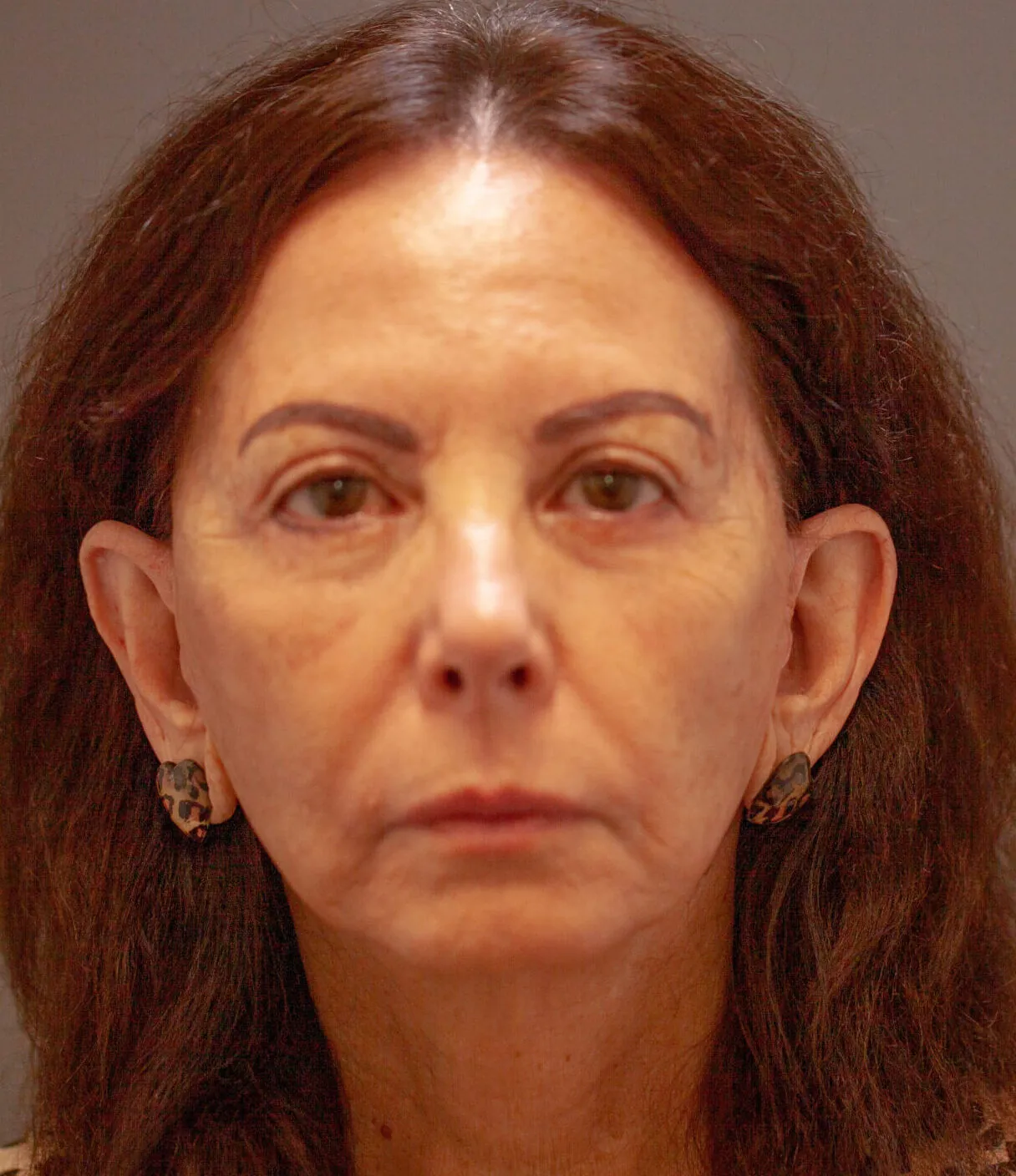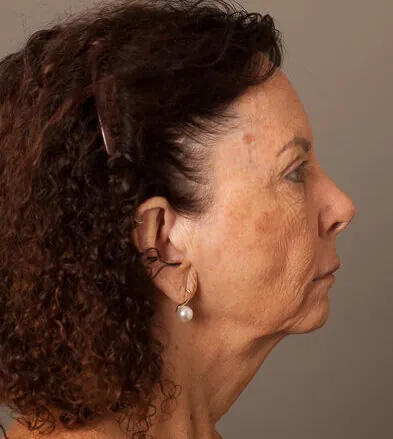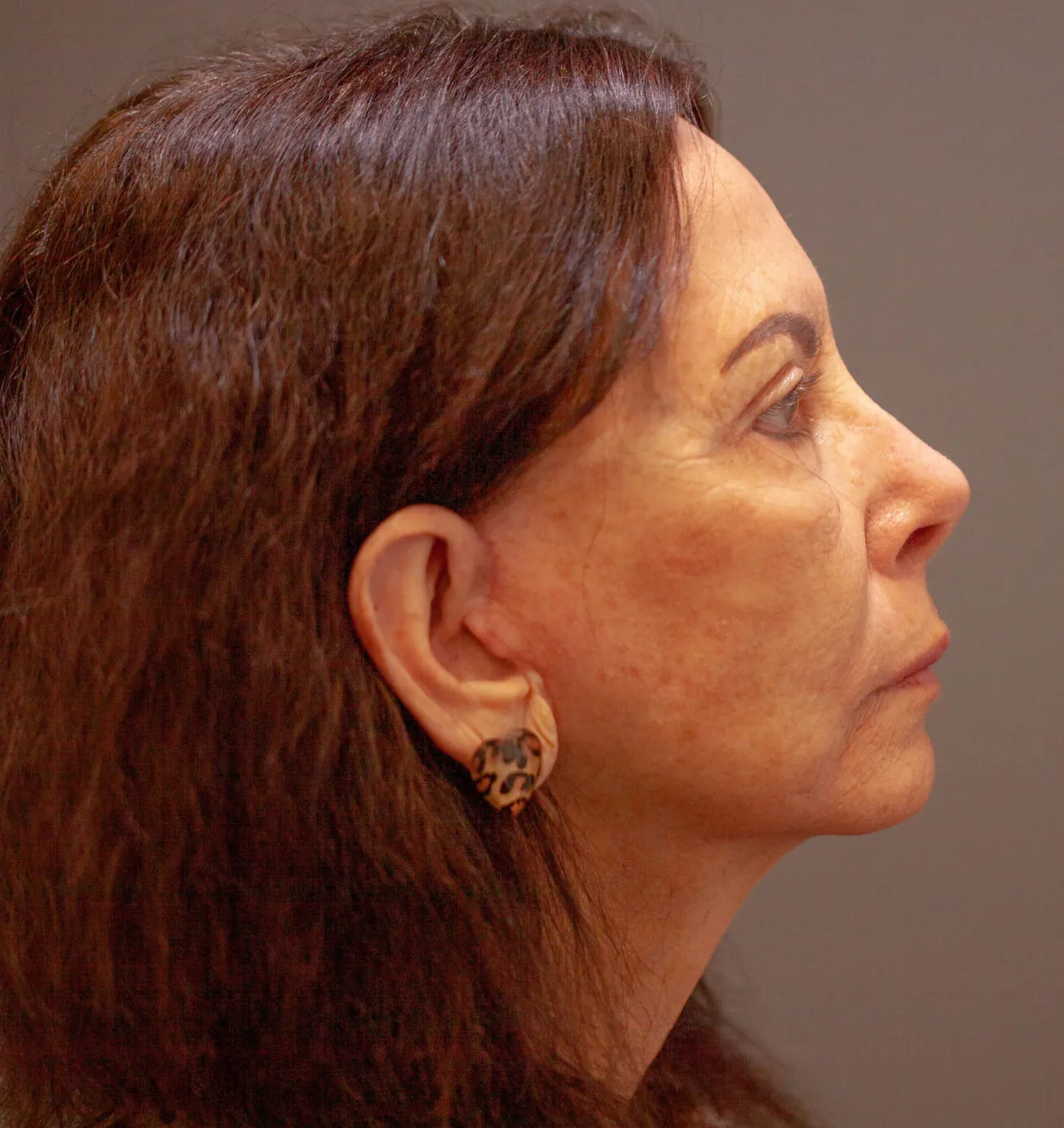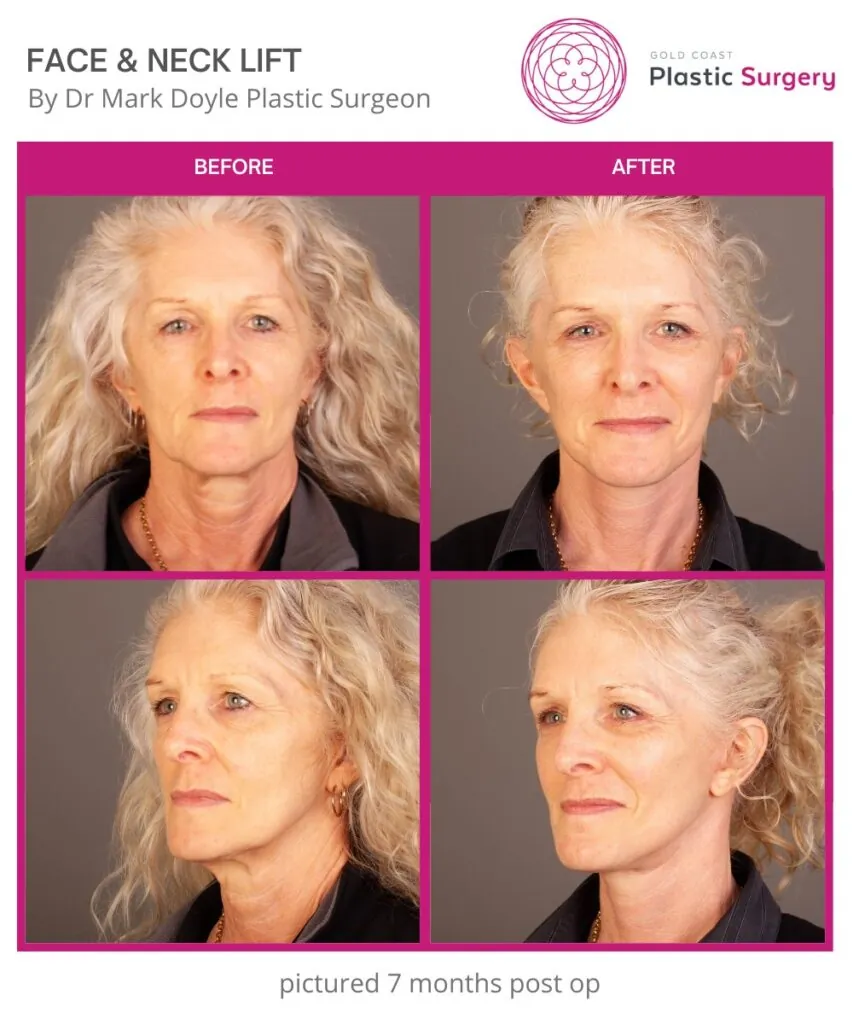Facelift surgery (rhytidectomy) is a procedure that aims to address age-related changes in the facial tissues, including reduced skin elasticity and soft-tissue descent. As a Specialist Plastic Surgeon serving the Gold Coast and Brisbane, Dr Mark Doyle performs facelift procedures for individuals seeking surgical alteration of the face, jawline, and neck.
Face Lift Surgery, at a glance
Target area: Loose skin and nasolabial lines
Time off work: 1 – 2 weeks
Total recovery: 6 weeks
Compression garment: 2 weeks full time wear, 6 weeks total
Scar position: In front of ears, around the earlobe & into hair line
What is a Facelift? (Rhytidectomy)
A facelift is a surgical procedure that repositions and tightens the deeper facial structures while removing excess skin. By addressing the underlying muscles and connective tissues, the procedure provides structural alteration of the face, jawline, and neck. A facelift does not stop the ageing process, but it can restore support to areas affected by soft-tissue laxity.
Facelift Surgery at Gold Coast Plastic Surgery
A facelift at Gold Coast Plastic Surgery begins with an individualised assessment to determine the most appropriate technique for each patient. Dr Doyle has performed face lift surgery on the Gold Coast for almost 20 years. Both approaches involve lifting and repositioning deeper facial layers, designed to support balanced and proportionate changes, depending on the patient’s anatomy and healing response. The chosen method is based on the degree of laxity, specific areas of concern, and overall facial structure.
Exploring Facelift Techniques
Understanding the available facelift techniques can help patients make an informed decision when discussing their options with a Specialist Plastic Surgeon.
Mini Facelift Gold Coast
A mini facelift, sometimes referred to as a short-scar facelift, aims to address mild to moderate signs of ageing. It focuses primarily on the jowls and upper neck area. This technique uses smaller incisions, and may result in a shorter initial recovery period compared to more extensive lifts. It is typically suited to individuals with early facial laxity who do not require a full repositioning of deeper structures.
SMAS Facelift
The SMAS (Superficial Musculoaponeurotic System) facelift elevates and repositions the supporting tissues beneath the skin. This technique allows for a more comprehensive adjustment of the mid- and lower-face, making it suitable for moderate to significant laxity. By addressing the SMAS layer directly, the procedure provides structural support that complements the overlying skin adjustments.

Deep Plane Facelift
A deep plane facelift involves releasing and mobilising deeper tissue layers beneath the SMAS. The Deep Plane facelift is understood as an extension of SMAS-based techniques, involving deeper release of certain retaining ligaments to allow more extensive mobilisation of facial soft tissues. These approaches exist along a continuum rather than as completely separate procedures. Dr Doyle performs facelift techniques within the SMAS family and will discuss how different levels of tissue mobilisation, including what is commonly referred to as Deep Plane-style adjustments, may be incorporated depending on your individual anatomy and surgical needs.
| Type of Face Lift | Procedure | Incision Placement | Targeted Area | Recovery Time | Ideal Candidate |
| Full Face Lift | Comprehensive | Hairline, around ears, sometimes under chin | The middle third of the face | 2-3 weeks | Advanced signs of excess and loose skin. |
| Mini Face Lift | Less invasive | In front of ears | Lower two-thirds of the face | 1-2 weeks | Mild to moderate signs of excess and loose skin. |
| SMAS Face Lift | Underlying muscles focused | Hairline, around ears | Lower two-thirds of the face | 2-3 weeks | Excess facial tissues |
| Deep Plane Face Lift | Extensive procedure | Hairline, around ears- Slightly longer incisions | Lower two-thirds of face | 3-4 weeks | Significant signs of excess and loose skin. |
Who is a Suitable Candidate for a Facelift?
Suitability depends on several factors, including general physical health, non-smoking status, and the presence of noticeable skin or soft-tissue laxity in the lower face and neck. Individuals considering this procedure must undergo a comprehensive assessment with a Specialist Plastic Surgeon to ensure the approach aligns with their health profile and expectations.
Facelift Procedure Details and Scarring
A facelift is performed under general anaesthesia in an accredited surgical facility. Incisions are typically placed around the ears and within the hairline to keep them as discreet as possible. Scarring is an unavoidable and permanent aspect of any surgical procedure. While incision placement aims to reduce visibility, it is important to understand that scars will be present and can vary between individuals. A clear discussion of scar management forms part of the pre-operative planning.
Face Lift Before and After | Real Patient Gallery
Disclaimer: All information on the Gold Coast Plastic Surgery website is general in nature and is not intended to be medical advice, nor does it constitute a doctor-patient relationship. Results can vary significantly and depend on individual patient circumstances. Please be aware that the outcomes shown are specific to those patients and may not necessarily reflect the results others may experience. Individual results can vary due to many factors, including genetics, diet, and exercise. All images on this website, unless specified as real patient images, are graphics used for illustrative purposes only. Surgery risks and complications will be covered in detail during a consultation with your surgeon. Book a consult for details regarding your cosmetic surgery procedure.

Face & Neck Lift

Face & Neck Lift

Face & Neck Lift

Face & Neck Lift

Face & Neck Lift
View All Face Lift Images by Dr Doyle
Download the Guide
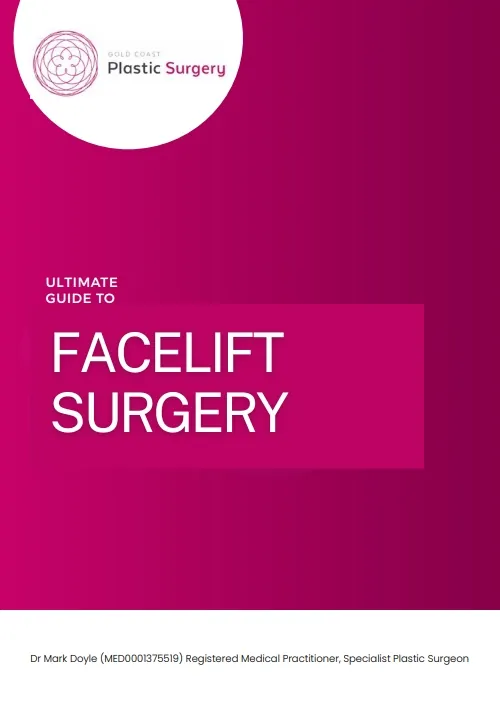
Recovery and Aftercare Timeline
Recovery varies, but most patients experience swelling, bruising, and a sensation of tightness in the initial days. Keeping the head elevated and wearing compression garments as instructed can assist in the early healing phase. Light activities and work can often be resumed within a couple of weeks, while driving and more strenuous activities generally require additional time. Full recovery progresses over several weeks, depending on individual healing responses.
Potential Risks and Complications
All surgical procedures carry risks. Potential complications of facelift surgery include infection, haematoma, temporary or permanent nerve injury, hypertrophic scarring, asymmetry, bleeding, and adverse reactions to anaesthesia. Risk reduction begins with selecting a qualified Specialist Plastic Surgeon and providing full medical disclosure during consultation. These risks will be discussed in detail to support informed decision-making.
Your Next Steps: Scheduling a Consultation
A valid GP referral is required before booking a consultation for a facelift. Patients must attend at least two consultations with the surgeon to allow adequate time for discussion, assessment, and informed decision-making. After consent is provided, a mandatory cooling-off period of at least seven days applies before surgery can be scheduled or any deposit made.
These requirements are designed to support patient safety and ensure that individuals have sufficient time to understand the procedure, consider their options, and ask any additional questions before moving forward.
Book Your Free 15 Minute Phone Chat Now
Medical References:
- Safety and Adjuncts in Face Lifting – Plastic and Reconstructive Surgery Journal
- Treatments and Procedures: Facelift and Mini-Facelift – Hopkins Medicine
- What are the steps of a facelift procedure? – American Society of Plastic Surgeons
- Facelift – the current concept of complex facial renewing
About Dr Mark Doyle FRACS (Plas) – Queensland Plastic Surgeon
Servicing patients in Gold Coast, Brisbane, Sunshine Coast, Cairns and New South Wales NSW – Northern Rivers, Byron Bay, Ballina, Lismore and more.
Dr Mark Doyle is a fully qualified Specialist Plastic Surgeon with over 30 years of experience performing breast, body, face and nose surgery. He has completed all required training and only carries out approved surgical practices. There are NO undertrained doctors or cosmetic doctors acting as surgeons at Gold Coast Plastic Surgery.



